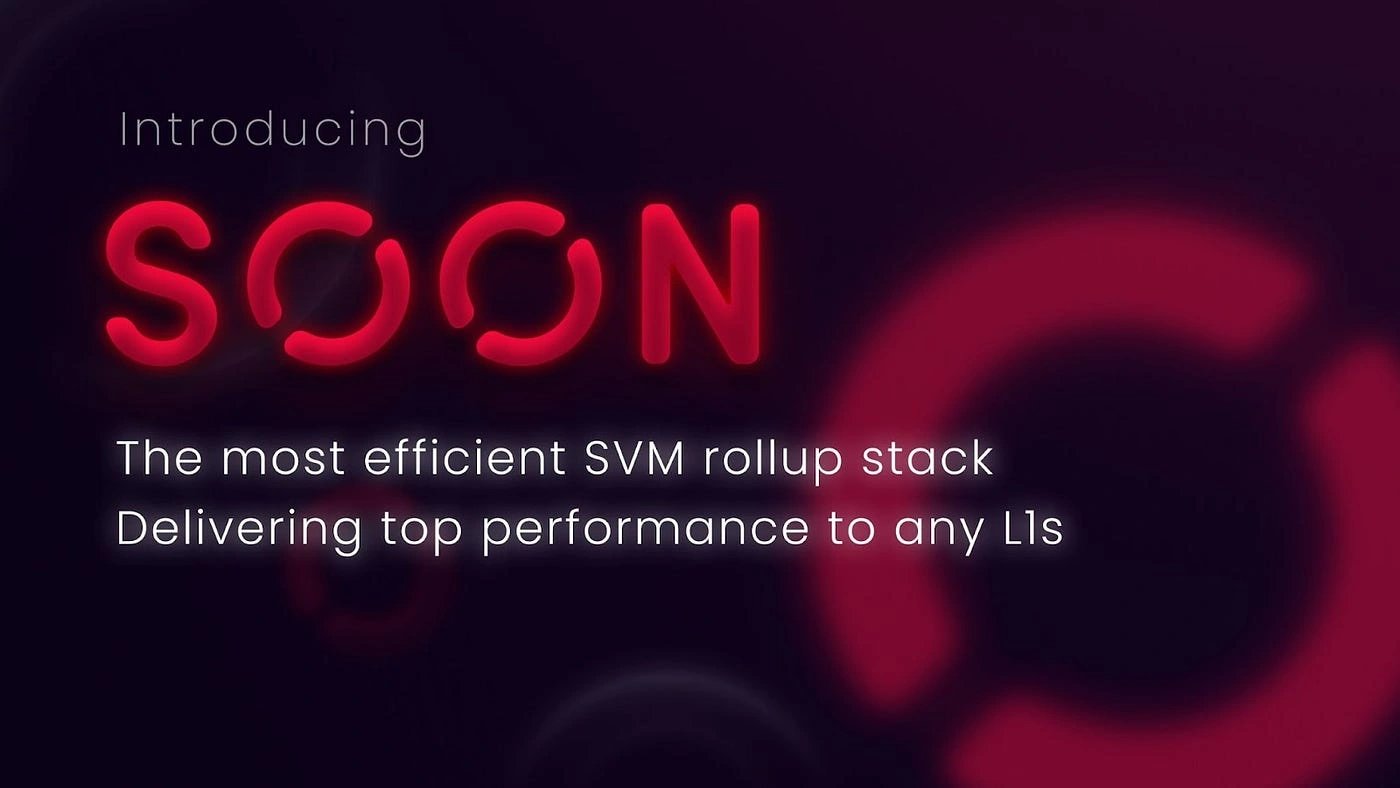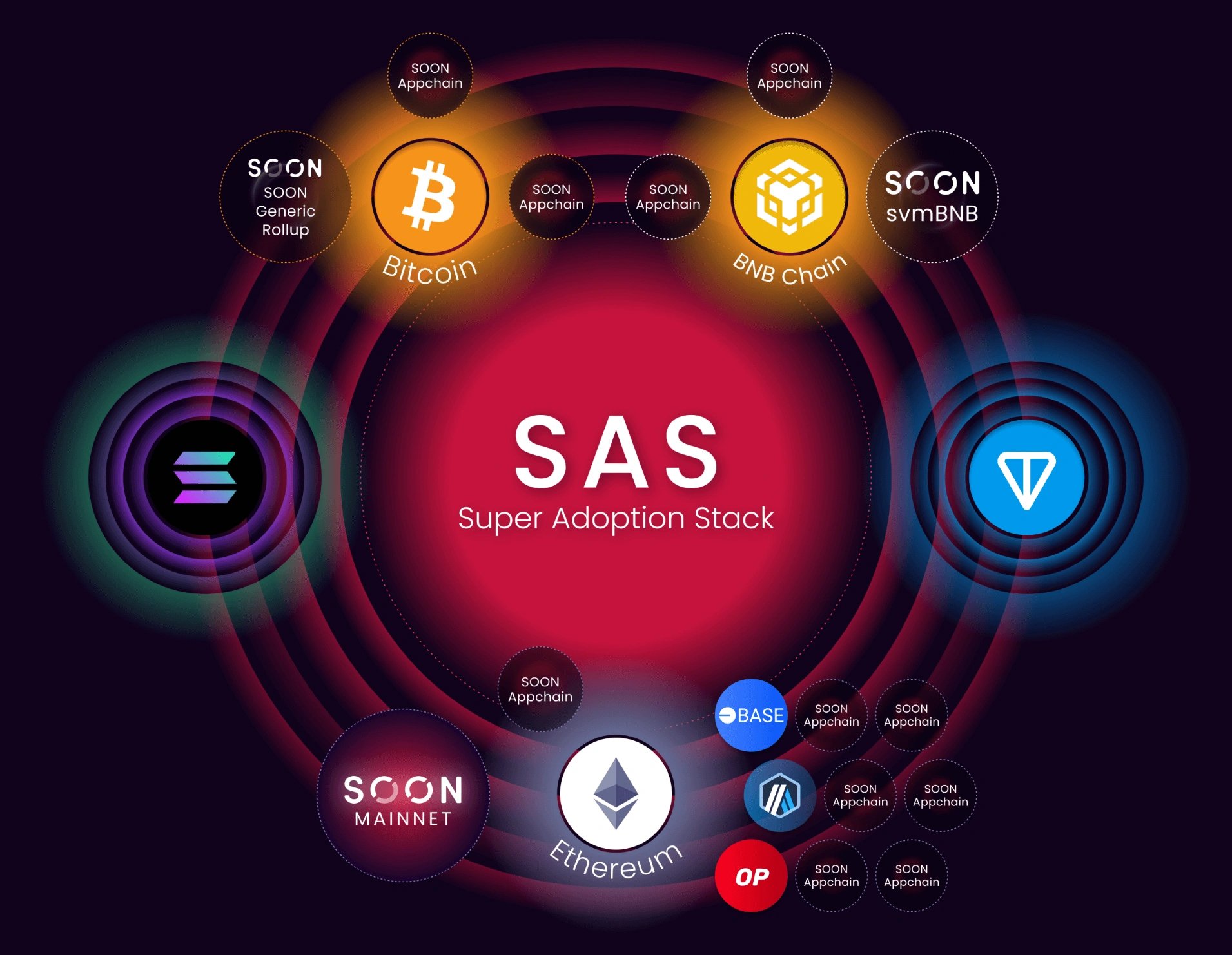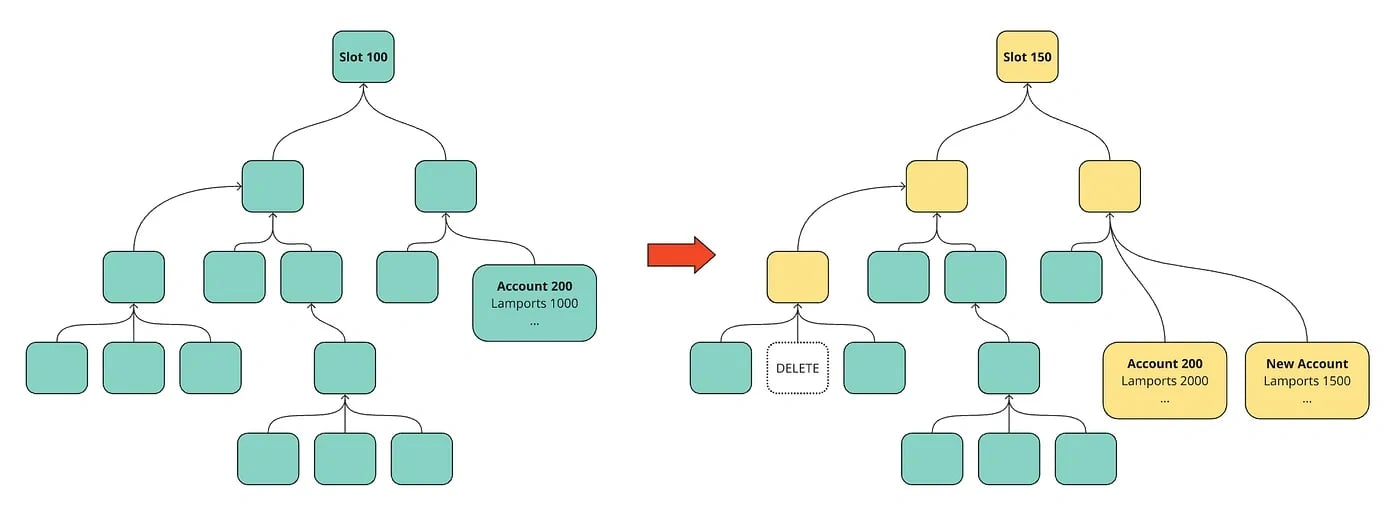위키 구독하기
Share wiki
Bookmark
SOON Network
SOON Network
SOON 네트워크는 다양한 레이어 1 블록체인에서 SVM 레이어 2 솔루션의 고처리량 배포를 지원하는 것을 목표로 하는 SVM 롤업입니다. [1] [2]

개요
조앤나 증(Joanna Zeng)이 2024년에 설립한 SOON 네트워크는 모듈식 아키텍처와 SOON 메인넷, SOON 스택, InterSOON의 세 가지 핵심 구성 요소를 통해 블록체인 채택을 강화하는 것을 목표로 하는 SVM 롤업입니다.
SOON 메인넷은 분리된 SVM을 사용하여 확장성을 개선하도록 설계된 이더리움의 레이어 2 네트워크입니다. SOON 스택은 다양한 레이어 1 블록체인에서 SVM 레이어 2 솔루션을 배포하기 위한 인프라를 제공하는 반면, InterSOON은 Hyperlane을 통해 크로스체인 통신을 용이하게 합니다.
이 네트워크는 솔라나 가상 머신을 사용한 병렬 트랜잭션 처리를 활용하여 기존 롤업의 혼잡 문제를 해결합니다. 계획에는 영지식 증명 통합, 상호 운용성 개선, 기술 오픈소싱을 통한 채택 장려가 포함됩니다. [1] [2] [3] [4] [5] [6] [7]
제품

SOON 메인넷
SOON 메인넷은 실행 계층에 분리된 솔라나 가상 머신(SVM)을 사용하는 이더리움의 범용 레이어 2 네트워크입니다. 개발자에게 확장 가능한 환경을 제공함으로써 이더리움 가상 머신(EVM)의 제약을 해결하는 것을 목표로 합니다.
메인넷은 높은 트랜잭션 처리량과 같은 SVM의 기능과 이더리움 기본 오류 증명을 결합하여 서로 다른 블록체인 생태계의 개발자 간 협업을 용이하게 합니다. [8] [9]
SOON 스택
SOON 스택은 다양한 레이어 1 네트워크에서 SVM 레이어 2를 배포하고 실행하도록 설계된 인프라 프레임워크입니다. 현재 이더리움을 결제 계층으로 지원하며 데이터 가용성을 위해 Avail을 통합하고 있으며, 추가 L1 및 DA 계층으로 확장할 계획입니다.
이 스택은 SVM 기반 체인의 배포를 간소화하여 사용자 정의 가능한 소비자 앱, 게임과 같은 고성능 사용 사례, DeFi 프로토콜과 같은 트랜잭션 집약적 플랫폼을 포함한 다양한 애플리케이션에 대한 성능과 유연성을 제공합니다. SOON 스택은 다양한 사용 사례에 대한 효율적인 실행 계층을 제공하고자 합니다. [9] [10]
InterSOON
InterSOON은 SOON 메인넷, SOON 스택(SOON 체인) 및 기타 레이어 1 네트워크 간의 상호 작용을 가능하게 하도록 설계된 크로스체인 메시징 프로토콜입니다. 중복 자산이나 중앙 집중식 보관자가 필요 없이 블록체인 간의 기본 상호 운용성을 허용함으로써 기존 상호 운용성 솔루션의 한계를 극복하는 것을 목표로 합니다.
이 프로토콜은 스마트 계약 및 자산에 대한 표준화된 메시징 계층을 제공하여 더욱 복잡한 크로스체인 상호 작용을 용이하게 합니다. 기능에는 자산이 체인 전체에서 기본 형태를 유지하는 유동성 보존과 트랜잭션 수수료를 줄이고 확장성을 높이는 것을 목표로 하는 분리된 SVM을 통한 성능 향상이 포함됩니다. [9] [11] [12]
아키텍처
분리된 SVM
SOON 네트워크의 분리된 SVM은 확장성, 성능 및 유연성을 향상시키는 것을 목표로 솔라나 가상 머신(SVM)을 합의 계층에서 분리하는 것을 목표로 합니다. 이 분리는 SVM이 트랜잭션을 더 효율적으로 처리하고 독립적으로 확장할 수 있도록 합니다. 또한 오류 방지 메커니즘을 통해 보안을 향상시키는 것을 목표로 합니다. 솔라나 검증자 구조에서 합의 구성 요소를 제거함으로써, 이 아키텍처는 레이어 1(L1)의 데이터를 레이어 2(L2)에 통합하는 파생 계층을 활용하여 롤업에 대한 다양한 L1 및 데이터 가용성 계층을 지원하고자 합니다. [13] [14]
Merkle화
솔라나의 Merkle화는 블록당 여러 루트와 블록 헤더에 상태 루트가 포함되지 않아 검증이 복잡해지는 문제에 직면합니다. SOON은 솔라나의 계정을 관리하기 위해 Merkle Patricia Tries(MPT)를 사용하고 UniqueEntry 특성을 통합하여 상태 루트를 SVM 기반 블록체인에 포함시키고 레이어 1 제출을 위해 450개 슬롯마다 루트를 업데이트함으로써 이 문제를 해결하고자 합니다.
이 접근 방식은 포함 및 사기 증명을 통해 보안을 향상시키고, 상태를 더 효율적으로 관리함으로써 확장성을 높이고, 이더리움의 MPT 모델과의 상호 운용성을 가능하게 합니다. 또한 라이트 클라이언트를 지원하고 Merkle 트리를 통해 레이어 1과 레이어 2 간의 신뢰할 수 없는 상호 작용을 용이하게 합니다. [15] [16]

잘못된 내용이 있나요?
